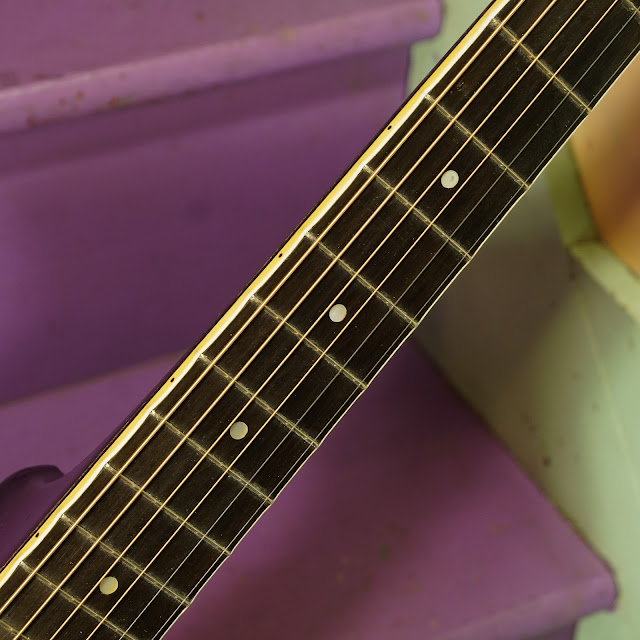1930s Kay Kraft Style A 2-Point Archtop Guitar
A customer of mine scheduled some time during last Saturday to get this worked-on. He'd bought it recently but wanted it dialed-in. He got lucky, too, because this Kay Kraft is an outlier condition-wise. The neck is straight and true and it has no structural issues to speak of.
I gave it a glorified setup -- a fret level/dress, intonation adjustments at the bridge, and fit a "keeper bolt" inside the body of the guitar to keep the adjustable neck gizmo's angle set where we want it. These often have a problem with "setup drift" as the giant wing-nut slightly loosens season to season which is really annoying. The keeper bolt stops that from happening.
The guitar is all-original, too, save a same-period adjustable Harmony bridge that was installed at some point. I think that's a marked improvement over the original non-adjustable Kay bridges. It's a lot easier to tweak action height at the bridge than to have to muck-about with the neck angle and a wingnut inside the guitar body. It also sounds essentially the same as a one-piece bridge. I tend to like adjustable bridges better on archtops (more snap usually), so maybe I'm a little biased...
I didn't have a chance to grab a video clip, but there are plenty of other examples of this same, 14-fret model on my blog. They're loud, punchy, snappy, and almost gypsy-jazz zippy. I like them for chop chords and lead work despite the fact that most of these wind-up with country-blues fingerpickers -- which they also suit, in a sort-of cranky, nasal, plap-twank way.
It's a good sound! Don't get mad!
The scale on these is very long for the time (25 3/4" on this one) and the neck stability always questionable, so I suggest 46w-10 for them but in the rare case of a good, tough, straight neck (like on this guy), 52w-11 is just fine for E-to-E. Heavier gauges are fine for downtuning, though.
The top is spruce, the back and sides are ply mahogany, and the neck is mahogany. Mahogany is unusal for the back and sides, too, as I'm used to seeing maple.
















Comments